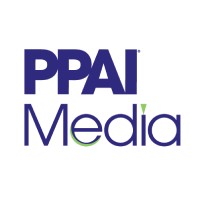The Conference Board’s Employment Trends Index improved in June after declining in May. It now stands at 108.94, up from 107.72 in May, and represents a 5.2 percent increase from the same month in 2017. The Conference Board’s June figures coincide with the federal government’s announcement that the U.S. labor market added 213,000 jobs in the month.
“As expected, after decreasing in May, the Employment Trends Index continued its solid path upwards in June, with positive contributions from all of its components,” said Gad Levanon, chief economist, North America, at The Conference Board. “The labor market will continue to tighten in the coming months, with strong employment growth outpacing the number of people entering the labor force.”
Upon the July 6 release of the U.S. Bureau of Labor Statistics Employment Situation Report, Levanon said, “The two main messages from today’s jobs report are that both employment and the labor force are still continuing to grow rapidly even though a low unemployment rate means fewer workers are on the sidelines than before.”
Levanon says that the U.S. labor market added 213,000 jobs in June and the figures for May and April were both revised up. “It is now clearer that the acceleration in economic activity since the beginning of 2017 has allowed job growth to strengthen further in the first half of 2018, despite tighter labor markets,” he says. “Much of the acceleration is driven by manufacturing employment, now growing at its fastest rate in 23 years. Despite the strong job growth, a jump in labor force participation increased the unemployment rate by 0.2 percentage points, partly offsetting the 0.3 percentage points drop in the previous two months. … Given the continued strength in the U.S. economy, we expect more of the same for the labor market in coming months: more people joining the labor force, but strong job growth will continue to tighten the labor market, further accelerating wage growth.”
In determining its Employment Trends Index, the Conference Board aggregates eight labor market indicators that it has found are accurate within their own areas. It notes that aggregated individual indicators into a composite index filters out “noise” to show underlying trends more clearly. All eight of the indicators made positive contributions to the index in June. From the largest positive contributor to the smallest, they are: the Ratio of Involuntarily Part-time to All Part-time Workers, Percentage of Firms With Positions Not Able to Fill Right Now, Percentage of Respondents Who Say They Find “Jobs Hard to Get,” Industrial Production, Job Openings, Real Manufacturing and Trade Sales, Number of Employees Hired by the Temporary-Help Industry, and Initial Claims for Unemployment Insurance.


